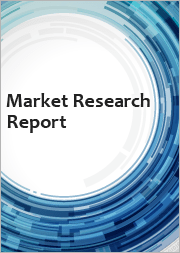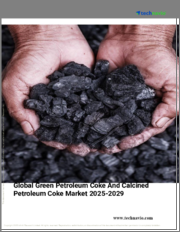
|
시장보고서
상품코드
1733742
세계의 석유 코크스 시장 : 유형별, 용도별, 지역별(2026-2032년)Petroleum Coke Market By Type (Calcined Coke, Fuel Grade Coke), Application (Cement Production, Aluminum Production, Blast Furnaces), & Region for 2026-2032 |
||||||
석유 코크스 시장 평가 - 2026-2032년
석유 코크스(펫코크스) 수요는 주로 시멘트, 발전, 알루미늄 생산 등 다양한 산업에서 폭넓게 활용되고 있어 수요가 크게 증가하고 있습니다. 원유정제의 제품별 석유코크스는 탄소 함량과 발열량이 높아 에너지 집약형 산업을 위한 연료로 각광받고 있습니다. 중국, 인도 등 신흥 아시아 국가들은 산업 성장을 위해 저렴한 에너지원을 찾고 있어 수요를 견인하고 있습니다. 시장 규모는 2024년 303억 5,000만 달러를 돌파하고 2032년에는 약 546억 3,000만 달러에 달할 것으로 예측됩니다.
신흥국을 중심으로 한 세계 인프라 개발의 추진은 시멘트와 알루미늄 수요를 촉진하고 있으며, 이들 모두 1차 에너지원으로 석유 코크스에 크게 의존하고 있습니다. 비용 효율적이고 효율적인 석유 코크스에 대한 수요가 증가하면서 2026-2032년 8.41%의 연평균 복합 성장률(CAGR)로 시장이 성장할 것으로 예측됩니다.
석유 코크스 시장 정의/개요
석유 코크스(일반적으로 애완용 코크스로 알려진)는 석유 정제소의 코커 장치 및 기타 분해 공정에서 얻은 탄소가 풍부한 고체 물질입니다. 석유 정제의 최종 탄소 제품 중 하나이며 일반적으로 색이 진하고 조성이 치밀하며 발열량이 높습니다. 애완용 코크스는 크게 연료용과 소성(또는 니들) 코크스의 두 가지 유형이 있습니다. 주로 에너지 생산에 사용되는 연료용 코크스는 정제도가 낮고 유황 함량이 높습니다. 반면, 소성 코크스는 순도가 높고, 철강 및 알루미늄 산업의 전극 제조와 같은 보다 특수한 용도로 사용됩니다.
펫코크스는 에너지 생성, 시멘트 생산, 알루미늄 제련, 제철 등 다양한 분야에서 폭넓게 사용되고 있습니다. 탄소 함량이 높고 발열량이 높기 때문에 고열 발생이 필요한 산업에서 비용 효율적인 에너지원으로 활용되고 있습니다.
세계 산업화의 진전에 따라, 특히 인프라 구축의 필요성이 높아지고 있는 신흥국에서 석유 코크스의 미래 전망은 유망한 것으로 평가받고 있습니다. 높은 황 함량과 탄소 배출로 인한 환경 문제에도 불구하고 현재 진행 중인 연구와 기술 개발은 더 깨끗한 연소 방법의 개발과 배출 규제 개선을 목표로 하고 있습니다. 이러한 기술 혁신은 석유 코크스의 저렴한 가격과 다용도성과 결합하여, 특히 경제 성장과 에너지 효율의 균형을 맞추기 위해 노력하는 지역에서 지속적인 수요를 창출할 것으로 예측됩니다.
알루미늄 산업 수요 증가가 석유 코크스 시장을 견인할 것인가?
알루미늄 산업 수요 증가는 주로 탄소 양극 생산에 필수적인 역할을 하기 때문에 석유 코크스 시장을 크게 견인할 것입니다. 세계 알루미늄 생산량이 2020년 6,530만 톤에서 2022년 6,900만 톤으로 증가함에 따라 알루미늄 1톤당 약 0.4-0.5톤의 석유 코크스가 필요하게 되어 업계의 석유 코크스 필요성이 증가하고 있습니다. 이러한 강한 상관관계는 알루미늄 부문의 확장이 석유 코크스 수요를 직접적으로 증가시킨다는 것을 보여줍니다.
철강 생산 증가는 특히 신흥국에서 석유 코크스 시장의 성장에 박차를 가하고 있습니다. 철강 산업에서는 석탄(75-85%)에 비해 탄소 함량이 높기 때문에(90-95%) 탄소 증가제 및 연료 대체제로서 석유 코크스(펫코크스)의 사용이 증가하고 있으며, 이는 이러한 추세를 주도하고 있습니다. 세계철강협회에 따르면 2021년 세계 조강 생산량은 19억 5,190만 톤에 달할 것으로 예상되며, 중국이 절반 이상을 차지할 것으로 예측됩니다. 이러한 철강 생산의 급증으로 인해 2018년 이후 PET 코크스 수요는 매년 8%씩 증가하고 있습니다.
환경 문제가 석유 코크스 시장의 성장을 방해할까요?
환경에 대한 우려는 석유 코크스(펫코크스) 시장의 성장을 저해할 가능성이 높습니다. 고탄소 화석연료인 석유 코크스의 연소는 다량의 온실가스와 오염물질을 배출하여 대기질 문제의 원인이 되고 있습니다. 많은 정부는 기후 변화에 대응하고 배출량을 줄이기 위해 더 엄격한 환경 규제를 시행하고 더 깨끗한 대체 에너지를 추진하고 있습니다. 이러한 조치는 특히 철강 생산과 같이 환경 친화적인 관행을 채택하도록 기업에 압력을 가하고 있는 산업에서 PET 코크스 수요를 억제하고 있습니다.
시장 변동은 석유 코크스 시장의 성장을 저해할 수 있습니다. 원유 가격 변동, 환경 규제, 최종 사용 산업에서 수요의 변화는 불투명한 시장 환경을 조성하고 생산 비용과 공급 안정성에 영향을 미칩니다. 가격 불안정으로 인해 철강, 시멘트 등의 산업이 석유 코크스에 지속적으로 의존하기 어렵고, 비용 효율적인 대체 연료 공급원을 찾아야 할 가능성이 있습니다. 탄소 배출에 대한 환경 규제가 강화되면 석유 코크스 사용이 제한되어 시장 성장이 더욱 둔화될 수 있습니다.
목차
제1장 서론
- 시장의 정의
- 시장 세분화
- 조사 방법
제2장 주요 요약
- 주요 조사 결과
- 시장 개요
- 시장 하이라이트
제3장 시장 개요
- 시장 규모와 성장 가능성
- 시장 동향
- 시장 성장 촉진요인
- 시장 성장 억제요인
- 시장 기회
- Porter의 Five Forces 분석
제4장 석유 코크스 시장 : 유형별
- 소성 코크스
- 연료 등급 코크스
제5장 석유 코크스 시장 : 용도별
- 시멘트 생산
- 알루미늄 제조
- 용광로
제8장 지역별 분석
- 북미
- 미국
- 캐나다
- 멕시코
- 유럽
- 영국
- 독일
- 프랑스
- 이탈리아
- 아시아태평양
- 중국
- 일본
- 인도
- 호주
- 라틴아메리카
- 브라질
- 아르헨티나
- 칠레
- 중동 및 아프리카
- 남아프리카공화국
- 사우디아라비아
- 아랍에미리트(UAE)
제9장 시장 역학
- 시장 성장 촉진요인
- 시장 성장 억제요인
- 시장 기회
- COVID-19의 시장에 대한 영향
제10장 경쟁 구도
- 주요 기업
- 시장 점유율 분석
제11장 기업 개요
- Exxon Mobil Corporation(USA)
- Valero Energy Corporation(USA)
- Marathon Petroleum Corporation(USA)
- China National Petroleum Corporation(China)
- Sinopec Corp.(China)
- Saudi Aramco(Saudi Arabia)
- Indian Oil Corporation Limited(India)
- BP plc(UK)
- Royal Dutch Shell plc(Netherlands)
- TotalEnergies SE(France)
제12장 시장 전망 시장 전망과 기회
- 신기술
- 향후 시장 동향
- 투자 기회
제13장 부록
- 약어 리스트
- 출전 및 참고문헌
Petroleum Coke Market Valuation - 2026-2032
The demand for petroleum coke (petcoke) is increasing significantly due to its broad applications across various industries, primarily in cement, power generation, and aluminum production. Petcoke, a byproduct of crude oil refining, is prized for its high carbon content and heating value, which makes it a preferred fuel for energy-intensive industries. Developing Asian countries like China and India have driven demand as they seek affordable energy sources for industrial growth. The market size surpass USD 30.35 Billion valued in 2024 to reach a valuation of around USD 54.63 Billion by 2032.
The global push for infrastructure development, particularly in emerging economies, has fueled the demand for cement and aluminum, both of which rely heavily on Petcoke as a primary energy source. The rising demand for cost-effective and efficient petroleum coke is enabling the market grow at a CAGR of 8.41% from 2026 to 2032.
Petroleum Coke Market: Definition/ Overview
Petroleum coke, commonly known as petcoke, is a carbon-rich solid material derived from oil refinery coker units or other cracking processes. It is the final carbon byproduct of petroleum refining, typically dark in color and dense in composition, with a high calorific value. Petcoke comes in two main forms: fuel-grade and calcined (or needle) coke. Fuel-grade petcoke, used mainly for energy production, is less refined and has a higher sulfur content, while calcined petcoke is purer and used in more specialized applications, such as in the manufacturing of electrodes for the steel and aluminum industries.
Petcoke finds extensive applications across various sectors, from energy generation and cement production to aluminum smelting and steel manufacturing. Its high carbon content and calorific value make it a cost-effective energy source for industries requiring substantial heat generation.
As global industrialization continues, the future scope of petcoke appears promising, especially in emerging economies with growing infrastructure needs. Despite environmental challenges due to high sulfur content and carbon emissions, ongoing research and technological advancements aim to develop cleaner-burning methods and improve emission controls. This innovation, combined with petcoke's affordability and versatility, positions it for continued demand, particularly in regions striving to balance economic growth with energy efficiency.
Will the Growing Demand from the Aluminum Industry Drive the Petroleum Coke Market?
The growing demand from the aluminum industry significantly drive the Petroleum Coke Market, mainly due to its essential role in producing carbon anodes. As global aluminum production rose from 65.3 million tonnes in 2020 to 69.0 million tonnes in 2022, the industry's need for petroleum coke has increased, with each tonne of aluminum requiring around 0.4-0.5 tonnes of this material. This strong correlation highlights how the expanding aluminum sector directly boosts demand for petroleum coke.
Rising steel production is fueling the Petroleum Coke Market growth, especially in emerging economies. The steel industry's increasing use of petroleum coke (pet coke) as a carbon raiser and fuel substitute-owing to its higher carbon content (90-95%) compared to coal (75-85%) is driving this trend. According to the World Steel Association, global crude steel production reached 1,951.9 million tonnes in 2021, with China contributing over half of the total output. This surge in steel production has led to an annual 8% increase in pet coke demand since 2018.
Will the Environmental Concerns Hamper the Growth of the Petroleum Coke Market?
Environmental concerns are likely to hamper the growth of the petroleum coke (pet coke) market. As a high-carbon fossil fuel, pet coke combustion releases significant greenhouse gases and pollutants, contributing to air quality issues. Many governments are implementing stricter environmental regulations and promoting cleaner energy alternatives to combat climate change and reduce emissions. These measures are curbing the demand for pet coke, especially in industries like steel production, where companies are increasingly pressured to adopt eco-friendly practices.
Market volatility can hamper the growth of the Petroleum Coke Market. Fluctuations in crude oil prices, environmental regulations, and shifting demand from end-use industries create an uncertain market environment, impacting production costs and supply stability. Volatile prices make it challenging for industries, such as steel and cement, to rely on petroleum coke consistently, as they may need to seek alternative, cost-effective fuel sources. Stricter environmental regulations concerning carbon emissions may restrict petroleum coke usage, further dampening market growth.
Category-Wise Acumens
Will the High Calorific Value Propel the Fuel Grade Coke Segment for the Petroleum Coke Market?
The fuel grade coke segment is dominating the Petroleum Coke Market. The high calorific value is expected to propel the fuel-grade coke segment in the Petroleum Coke Market, as it offers a cost-effective and energy-dense alternative to coal and other fossil fuels. Fuel-grade petroleum coke, primarily used in power plants and cement kilns, provides a higher heat output, making it attractive for industries seeking efficient, high-energy fuels. This demand is particularly strong in regions with growing industrialization and energy needs, driving the market for fuel-grade coke as a preferred fuel source.
The growing cement industry is likely to propel the fuel-grade coke segment in the Petroleum Coke Market, as fuel-grade coke is a preferred fuel in cement kilns due to its high calorific value and cost-effectiveness. Cement production requires high temperatures, and fuel-grade petroleum coke provides the necessary heat efficiently and economically, especially in regions with expanding infrastructure projects. As demand for cement rises globally, particularly in emerging economies, the need for fuel-grade coke as a primary fuel source is expected to increase, driving growth in this segment.
Will the Growing Global Construction Industry Accelerate the Cement Production Segment for the Petroleum Coke Market?
The cement production segment is ruling the Petroleum Coke Market. The growing global construction industry is anticipated to promote the cement production segment within the Petroleum Coke Market. With expanding infrastructure projects and urbanization, especially in emerging economies, the demand for cement is surging. Petroleum coke, particularly fuel-grade coke, is a preferred fuel in cement production due to its high heat output and cost efficiency. As construction activities rise worldwide, the cement industry's reliance on petroleum coke to meet energy needs at a lower cost is expected to drive the market for this segment.
The versatility of petroleum coke is anticipated to boost its use in the cement production segment. Petroleum coke's high carbon content and calorific value make it an efficient fuel source for cement kilns, where it is increasingly used as a cost-effective alternative to traditional fuels. This efficiency in energy output, combined with lower costs, drives demand in cement production, especially as industries seek economical solutions amidst fluctuating energy prices, supporting the Petroleum Coke Market's growth within this segment.
Country/Region-wise Acumens
Will Industrial Growth & Infrastructure Development Lead the Asia Pacific Region for the Petroleum Coke Market?
Asia Pacific's dominance in the Petroleum Coke Market is driven by several factors. Industrial growth and infrastructure development are likely to accelerate the Asia Pacific region's petroleum coke (petcoke) market. The Asian Development Bank reports a projected infrastructure demand of $26 trillion from 2016 to 2030, creating substantial demand for energy and materials like petcoke. China, accounting for nearly 45% of global petcoke use in the aluminum sector as of 2023, and India, the world's second-largest cement producer with a capacity of 500 million tonnes, are key consumers driving regional demand. This infrastructural expansion fosters a thriving petcoke market to support the aluminum and cement industries.
Energy demand in the Asia Pacific region is expected to accelerate the Petroleum Coke Market, driven by high consumption rates, industrial growth, and rising demand for aluminum. According to the International Energy Agency (IEA), Asia Pacific accounts for nearly 60% of global energy consumption, with countries like China and India leading in industries requiring petcoke. China's substantial aluminum production, reaching 40.21 million tonnes in 2023, relies heavily on petroleum coke as a carbon anode, while India's petroleum coke imports increased by 23% in 2022-23, further highlighting the region's growing demand for this energy source.
Will the Shale Oil Production Expansion Expand the North America Region for the Petroleum Coke Market?
North America is rapidly growing in the Petroleum Coke Market. The expansion of shale oil production is expected to escalate the Petroleum Coke Market in North America, especially in the United States, which leads to global production. As the world's largest producer, U.S. petroleum coke output reached 53.3 million short tons in 2022, with about 75% exported, highlighting its significant global impact. With a projected CAGR of 6.8% through 2028, this growth is fueled by increased refining capacity and rising demand from key industries, underscoring shale oil's role in supporting the Petroleum Coke Market's expansion in North America.
The aluminum industry's resurgence is likely to escalate North America's Petroleum Coke Market, driven by increased demand for calcined petroleum coke in anode production. The Aluminum Association projects a 13% increase in U.S. aluminum production from 2023 to 2025, supported by over $6 billion invested in domestic production since 2013. Additionally, Canada's aluminum output is expected to grow from 3.1 million tonnes in 2022 to 3.5 million tonnes by 2025, according to Natural Resources Canada, further fueling demand for petroleum coke in the region.
Competitive Landscape
The Petroleum Coke Market is a dynamic and competitive space, characterized by a diverse range of players vying for market share. These players are on the run for solidifying their presence through the adoption of strategic plans such as collaborations, mergers, acquisitions, and political support.
The organizations are focusing on innovating their product line to serve the vast population in diverse regions. Some of the prominent players operating in the Petroleum Coke Market include ExxonMobil, Chevron Corporation, Royal Dutch Shell, Reliance Industries Limited, Saudi Aramco, Valero Energy Corporation, Essar Oil, Marathon Petroleum Corporation, Indian Oil Corporation.
Latest Developments
- In July 2023, Venezuela's state oil firm PDVSA signed two new contracts with Latif Petrol, a Turkish company, and Reussi Trading, a St. Vincent and the Grenadines-based firm, to export up to 1.6 million metric tons of petroleum coke.
- In August 2022, BP Oil and Gas Company and Eni Itlain Energy Company announced the establishment of Azule Energy, a 50/50 joint venture that combines their Angolan businesses.
Petroleum Coke Market, By Category
- Type:
- Calcined Coke
- Fuel Grade Coke
- Application:
- Cement Production
- Aluminum Production
- Blast Furnaces
- Geography:
- North America
- Europe
- Asia-Pacific
- Latin America
- Middle East & Africa
TABLE OF CONTENTS
1. Introduction
- Market Definition
- Market Segmentation
- Research Methodology
2. Executive Summary
- Key Findings
- Market Overview
- Market Highlights
3. Market Overview
- Market Size and Growth Potential
- Market Trends
- Market Drivers
- Market Restraints
- Market Opportunities
- Porter's Five Forces Analysis
4. Petroleum Coke Market, By Type
- Calcined Coke
- Fuel Grade Coke
5. Petroleum Coke Market, By Application
- Cement Production
- Aluminum Production
- Blast Furnaces
8. Regional Analysis
- North America
- United States
- Canada
- Mexico
- Europe
- United Kingdom
- Germany
- France
- Italy
- Asia-Pacific
- China
- Japan
- India
- Australia
- Latin America
- Brazil
- Argentina
- Chile
- Middle East and Africa
- South Africa
- Saudi Arabia
- UAE
9. Market Dynamics
- Market Drivers
- Market Restraints
- Market Opportunities
- Impact of COVID-19 on the Market
10. Competitive Landscape
- Key Players
- Market Share Analysis
11. Company Profiles
- Exxon Mobil Corporation (USA)
- Valero Energy Corporation (USA)
- Marathon Petroleum Corporation (USA)
- China National Petroleum Corporation (China)
- Sinopec Corp. (China)
- Saudi Aramco (Saudi Arabia)
- Indian Oil Corporation Limited (India)
- BP plc (UK)
- Royal Dutch Shell plc (Netherlands)
- TotalEnergies SE (France)
12. Market Outlook and Opportunities
- Emerging Technologies
- Future Market Trends
- Investment Opportunities
13. Appendix
- List of Abbreviations
- Sources and References




















